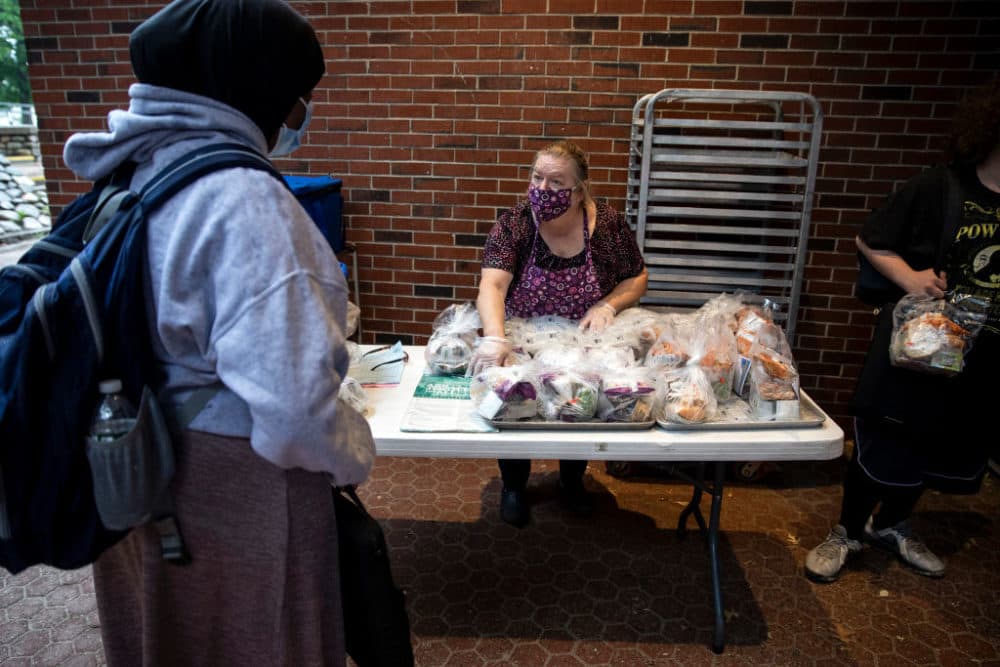Attention all Massachusetts parents and caregivers: Thanks to a federal flexibility waiver through the U.S. Department of Agriculture (USDA), school meals are free for all students this year — and your child should eat them. This is our opportunity to demonstrate that school meals for all is a powerful solution to ending childhood hunger.
The federal waiver, which is part of COVID relief funding and expires at the end of this school year, is a dramatic departure from the pre-pandemic system, which relied on a tiered eligibility scale. Under that system, some kids paid the full cost of a school meal and some paid a reduced amount, while others ate for free. When students are forced to pay for school meals, we perpetuate stigma around family income status.
The previous system also didn't meet the need. In 2019, 26% of children experiencing food insecurity in Massachusetts couldn't get free or reduced-price school meals through the federal program. Our priority must be to feed our kids, full stop, and universal school meals will do that. When all students eat for free, school meals transform from being a stamp of poverty to a tool for community building and social development. That’s especially true now, 18 months into a pandemic when opportunities to do so are increasingly difficult. In 2020, 28.3 million meals were served to kids and teens at no cost through federal waivers, and Project Bread's FoodSource hotline calls increased to more than 46,000 calls.

Melissa Campbell, a graduate student in social work at Salem State University and an advocate for universal free meals, was homeless for a short time in high school. At a recent hearing, she urged Massachusetts legislators to make free meals a reality for all students.
At 15, buying lunch for $2.50 every day was so much easier than trying to prove I was poor enough to qualify for a free meal. The thought of having to look a bunch of adults in the face and explain to them why I should be able to eat for free was terrifying and humiliating. Instead, I did what made the most sense in my teenage brain: I ran up a huge lunch debt. Then, every few weeks when I got paid, I’d slip the lunch lady a $20 bill and hope no one would notice.
A mountain of research tells that hungry students can’t learn. We also know that schools — principals, teachers, school nutrition staff — want their students to have enough to eat. At Project Bread, we see how school districts are working to develop new recipes that use common USDA foods and pioneer strategies like recipe testing with kids, to ensure school lunches include textures and flavors students actually want to eat.
When all students eat for free, school meals transform from being a stamp of poverty to a tool for community building and social development.
Districts are reimbursed for school food based on participation. When more kids eat free breakfast and lunch, more federal funding comes into the district. For example, when Springfield Public Schools adopted School Meals for All, they saw a 43.5% increase in school food program revenue between 2014 and 2017, enabling them to make several improvements to quality, including sourcing whole ingredients and leveraging a new culinary and nutrition center. This additional revenue affords all schools greater flexibility to invest in student nutrition, whether that’s in the use of high-quality ingredients, being able to meet rising food prices, or having greater capacity to hire and train more school nutrition staff. The funds also support a school’s ability to offer culturally relevant meals, reduce food waste and expose students to new foods they may not get at home.
When participation in school meals is low, less revenue flows into the school districts, which perpetuates the cycle of underfunded school nutrition departments that must work twice as hard with less staff to continue to provide quality meals for all students. If districts can demonstrate high participation, we all benefit.
The media has highlighted supply chain issues and labor shortages that are impacting school meals, such as a major produce distributor closing in Watertown last month, resulting in at least 90 school districts having to find a new source right as the school year began. But families should not misunderstand this coverage as a reason to opt out. Quite the opposite. More children eating at school is part of the solution.
When a student visits the school nurse for a scraped knee, they aren’t asked to pay for the bandage. And school libraries don’t charge an entry fee at the door. The cost of educating future generations is understood to include first aid supplies and books. So, why is meeting one of our students’ most basic needs — food — any different?
In addition to advancing a proven solution to address childhood hunger, mitigating stigma and providing better financial stability for your school district, having your child eat free meals at school helps picky eaters and makes mornings for families just a little bit easier. We are in an urgent, all hands-on deck moment in which we can create meaningful change for all of our kids and teens in Massachusetts.
Massachusetts residents struggling to afford food should call Project Bread’s FoodSource Hotline at 1.800.645.8333. Confidential and personalized assistance from empathetic counselors is available for free in 180+ languages and for the hearing impaired, Monday to Friday from 8 a.m. to 7 p.m. and Saturday from 10 a.m. to 2 p.m.
Why your kids should eat school lunch. Even if you can pack it for them - WBUR
Read More

No comments:
Post a Comment